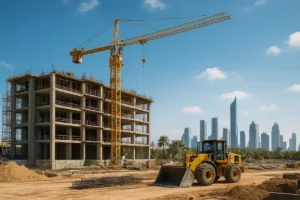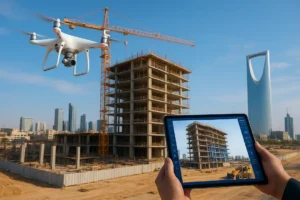How Smart Infrastructure Is Redefining Saudi Cities
In the rapidly evolving landscape of Saudi Arabia, the concepts of smart infrastructure and urban mobility are becoming central to how cities are planned and built. This article explores how construction in Saudi Arabia is playing a pivotal role in shaping the future of its cities—examining definitions, technologies, practical examples, and the impact on society and economy.
What is Smart Infrastructure and Urban Mobility?
Smart Infrastructure
Smart infrastructure refers to physical assets (roads, bridges, transit systems, utilities) embedded with digital sensors, data-analytics, connectivity (IoT) and adaptive management. In the context of Saudi Arabia, smart infrastructure means using advanced materials, digital twins, sensors, renewable energy integration, and predictive maintenance. For example, smart-concrete and digital-ready buildings are being referenced in Saudi Arabia’s urban projects.
Urban Mobility
Urban mobility describes how people and goods move within urban spaces—covering public transit, shared mobility, walking/cycling, autonomous vehicles, and integrated systems. In Saudi Arabia, urban mobility is being redefined through the lens of smart infrastructure: intelligent transport systems, real-time traffic control, data-driven services and reduced reliance on private vehicles
Why It Matters
-
Rapid urbanisation in Saudi Arabia: cities expanding, population increasing
-
Economic transformation under Saudi Vision 2030: reducing oil dependence, diversifying economy, improving quality of life.
-
Construction in Saudi Arabia has to deliver infrastructure that is sustainable, resilient, tech-enabled and mobility-friendly.
Thus, the role of construction in Saudi Arabia in delivering smart infrastructure & urban mobility is not optional—it is foundational for the future Saudi city.
How Construction in Saudi Arabia Enables Smart Infrastructure & Urban Mobility
Investment and Market Scale
-
The transportation infrastructure construction market in Saudi Arabia was valued at USD 98 billion in 2023 and expected to reach USD 154 billion by 2029, growing at a CAGR of ~7.8%.
-
The smart cities & IoT infrastructure market in Saudi Arabia is estimated at USD 13.2 billion historically, with major growth ahead.
-
Smart cities market: valued USD 3.55 billion in 2019, projected USD 14.75 billion by 2027 (CAGR ~19.6%).
These figures show that construction in Saudi Arabia is not just about buildings—it is about building the digital physical infrastructure that supports smart mobility and cities.
Key Construction Technologies & Methods
-
Use of smart concrete, sensors and digital-ready building systems in Saudi smart city developments.
-
Digital twin models for roads/infrastructure: for example, road network mapping in Saudi Arabia uses digital twin solutions to plan maintenance.
-
Integration of IoT, AI, analytics into infrastructure construction and operations (smart mobility, utilities, buildings).
Construction Projects with Smart Mobility Focus
-
The Line (part of NEOM) in Saudi Arabia embodies a “zero-car, high-connectivity” urban model with smart infrastructure and urban mobility as key elements.
-
The smart mobility and infrastructure agenda in Saudi Arabia’s major cities (e.g., Riyadh) is being advanced through construction of connected transit, smart roads and integrated mobility services.
Role of Construction Firms and Stakeholders
Construction in Saudi Arabia must coordinate with tech providers, city planners, mobility service companies and government bodies. This means construction firms are not just building roads and bridges—they are building smart systems, networks of sensors, data platforms and mobility hubs.
Benefits of Smart Infrastructure & Urban Mobility via Construction
-
Improved quality of life: Shorter commutes, more walkable cities, less congestion, better public transit.
-
Sustainability: Reduced carbon emissions, efficient resource usage, smart energy and mobility systems integrated via construction.
-
Economic diversification: Construction in Saudi Arabia is enabling new sectors—smart infrastructure, mobility services, tech integration—beyond oil.
-
Resilience and future-proofing: Smart infrastructure built today supports future technologies (autonomous vehicles, IoT, data analytics) and adapts as cities evolve.
Conclusion
Construction in Saudi Arabia occupies a pivotal role in shaping the future Saudi city—delivering the smart infrastructure that underpins urban mobility, connectivity and sustainability. From mega-projects to smart roads, transit systems to digital twins, the construction industry is transforming how people move, live and work.
By aligning investment, technology and planning, construction in Saudi Arabia is helping cities become smarter, more mobile and more livable. As urban mobility demands continue to grow, and as the Kingdom pursues its Vision 2030 goals, the importance of construction in Saudi Arabia will only increase.
For any reader curious about how cities evolve and how mobility and infrastructure co-exist—construction in Saudi Arabia offers a vivid case study. If you’d like to dive deeper into specific projects or technologies, feel free to ask!



